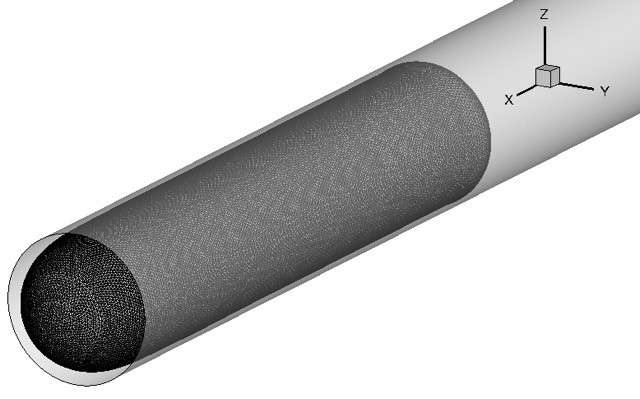Squeezing of vesicles through narrow constrictions shows promise for targeted drug delivery

Vesicles, like living cells, are membrane-enclosed "sacs" of fluid that can cushion molecular cargo such as pharmaceutical drugs. If a drug is successfully encapsulated into a vesicle carrier and the carrier remains intact, it can be delivered directly for therapeutic treatment. Inside the host, vesicles protect the drug cargo and can efficiently target recipient cells to deliver the drugs safely. This type of "targeted" delivery provides advantages over more extreme methods of treatment such as chemotherapy, which can damage healthy cells in the host.
One big challenge targeted drug delivery faces today is efficiently "loading" a drug into a carrier without compromising the carrier's structural integrity. A recently proposed and promising method is to mechanically deform a carrier by squeezing it through a narrow, microscale constriction. This mechanical deformation creates transient pores in the carrier membrane—aka "mechanoporation"—to enhance the membrane's permeability to macromolecules and promote the efficient uptake of drugs.
Although this method shows promise, there are risks associated with rupturing the membrane when the carrier is deformed.
During the 88th Annual Meeting of The Society of Rheology, being held Feb. 12-16, in Tampa, Florida, Joseph Barakat, a chemical engineering doctoral candidate at Stanford University, will present his work to develop a model for vesicle squeezing that can be used to predict and optimize drug loading procedures.
"An accurate model can have incredible predictive power and circumvent the need for an exhaustive set of experiments, which can be cost- or time-prohibitive," he explained. "To this end, my aim is to provide rational design criteria for the delicate manipulation of drug carriers to efficiently load pharmaceutical molecules without rupturing the carrier membrane."
Barakat's work is supported by the National Science Foundation under the supervision of Professor Eric Shaqfeh, whose research group has taken a fundamental approach to modeling vesicles in fluid flow.
The model takes into account the equations of fluid flow and membrane mechanics. These equations are complicated and, in general, require a computer for their solution. "From my computer simulations, I predict how fast a vesicle moves in response to an applied pressure, as well as how tense the membrane becomes under the action of fluid friction," Barakat explained. "These metrics are important for practical manipulation of vesicles.
The real significance of Barakat's work is that while cell squeezing has received limited attention in scientific literature, he's managed to solve some outstanding issues.
First, he's shown how membrane tension increases with flow confinement which has implications for drug uptake. "This implies that modestly deflating a vesicle—via a gentle osmotic imbalance—can prevent rupture during squeezing," Barakat pointed out.
Barakat has also identified the "geometric threshold" for vesicle membrane rupture as a minimum channel diameter. "This threshold, which depends on vesicle shape and size, can be used to choose the appropriate dimensions for a vesicle squeezer apparatus, in the interest of avoiding rupture," he said.
One of the direct applications for Barakat's work is the rational design of microfluidic devices for vesicle mechanoporation and subsequent drug uptake. "My predictions will enable smarter design of microfluidic devices to trap and deform vesicles of any size and shape with reasonable ease and at high throughput," Barakat said.
Beyond this, his work provides the power requirements (driving pressure), anticipated modes of failure (membrane rupture), and how to avoid failure. "The broader application of my theory is in predicting how cells behave under confinement," Barakat explained. This is important for predicting the invasion of cancer cells through porous networks within the body, in terms of how fast the cells are moving and how much resistance they encounter. Answers to these questions may be used to slow cancer metastasis.
Barakat's future work will focus on extending his theory to incorporate a model for drug permeation through the membrane that takes into account membrane tension, and this modeling, Barakat said, "could then be compared to existing measurements with fluorescently tagged molecules being loaded into a drug carrier—bringing the model full circle to the direct application."
More information: Squeezing of Vesicles through Narrow Tubes. www.rheology.org/SoR172/ViewPaper?ID=47
Provided by American Institute of Physics



















